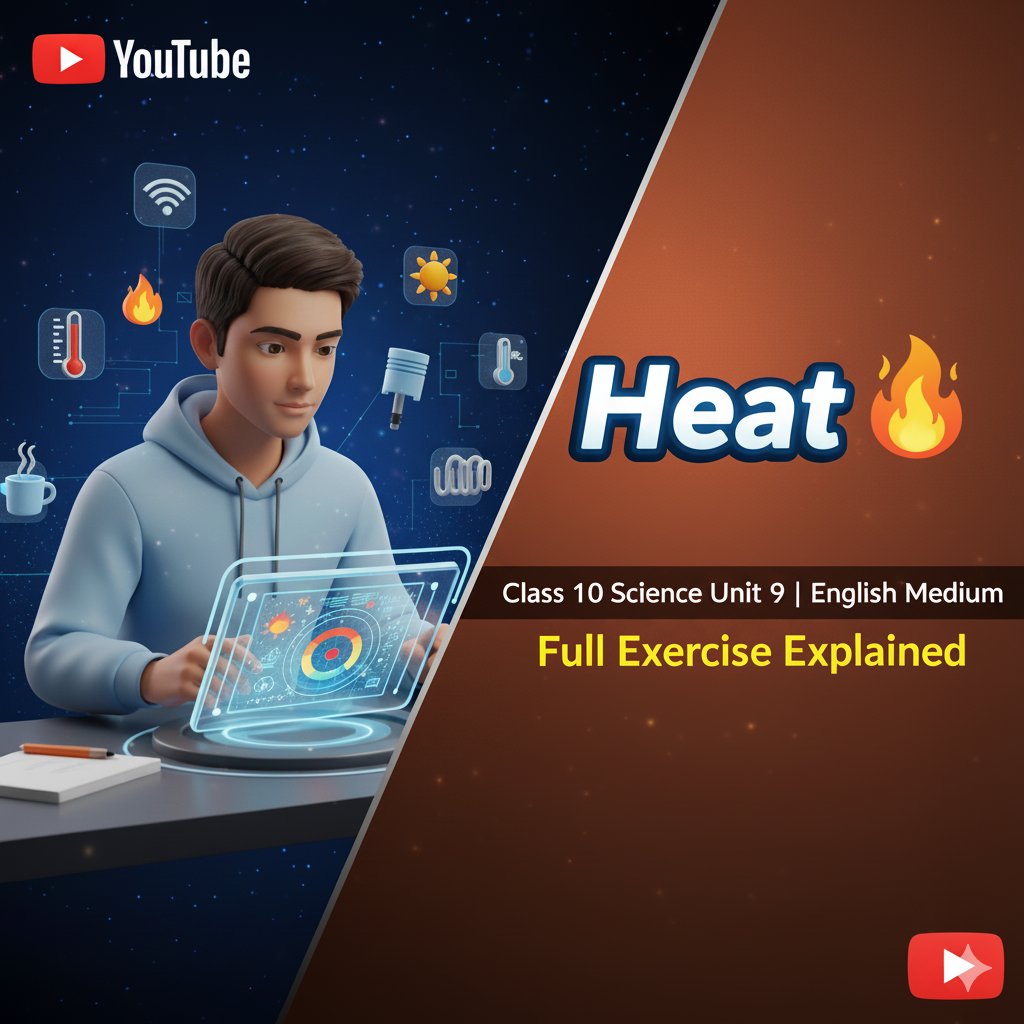Class 10 Science Unit 9: Ultimate Heat Exercise Guide with Step-by-Step Solutions
Class 10 Science Unit 9 introduces the fascinating concept of Heat, a fundamental topic in physics that explains energy transfer and temperature changes. This comprehensive guide provides complete exercise solutions for Class 10 Science Unit 9, helping students master heat concepts through detailed explanations and practical examples essential for SEE examination success.

Understanding heat transfer concepts in Class 10 Science Unit 9
Class 10 Science Unit 9 Exercise PDF
Access the complete exercise for Class 10 Science Unit 9 through the embedded PDF below. This comprehensive resource covers all heat-related problems and questions from your curriculum.
Mastering Class 10 Science Unit 9: Heat Fundamentals
The study of heat in Class 10 Science Unit 9 explores thermal energy, temperature measurement, and heat transfer mechanisms. This crucial chapter in Class 10 Science Unit 9 builds the foundation for understanding thermodynamics and practical applications in daily life.
Essential Concepts in Class 10 Science Unit 9
Before solving the exercise problems, let’s review the core concepts covered in Class 10 Science Unit 9:
- Difference between heat and temperature
- Heat transfer methods: conduction, convection, and radiation
- Specific heat capacity and its applications
- Thermal expansion of solids, liquids, and gases
- Calorimetry and heat measurement
- Practical applications of heat in daily life
Important Note for Class 10 Science Unit 9
Remember that heat always flows from a higher temperature region to a lower temperature region. This fundamental principle in Class 10 Science Unit 9 explains various natural phenomena and is crucial for solving numerical problems correctly. Understanding this concept will help you master the entire chapter of Class 10 Science Unit 9.
Detailed Solutions for Class 10 Science Unit 9 Exercise
Let’s explore comprehensive solutions for key problems from the Class 10 Science Unit 9 exercise with step-by-step explanations:
Problem 1: Calculating Heat Energy
Calculate the amount of heat required to raise the temperature of 2kg of water from 20°C to 80°C. (Specific heat capacity of water = 4200 J/kg°C)
Solution: Using the formula Q = m × c × ΔT, where m = 2kg, c = 4200 J/kg°C, and ΔT = 80°C – 20°C = 60°C. Therefore, Q = 2 × 4200 × 60 = 504,000 J or 504 kJ. This fundamental calculation is essential in Class 10 Science Unit 9.
Problem 2: Understanding Heat Transfer Methods
Explain why a metal spoon feels colder than a wooden spoon when both are at room temperature.
Solution: In Class 10 Science Unit 9, we learn that metals are good conductors of heat. The metal spoon conducts heat away from your hand faster than the wooden spoon, making it feel colder. This demonstrates the principle of conduction, a key topic in Class 10 Science Unit 9.
Problem 3: Application of Specific Heat Capacity
Why do coastal areas experience moderate temperatures compared to inland areas?
Solution: Water has a high specific heat capacity, meaning it absorbs and releases heat slowly. In coastal areas covered in Class 10 Science Unit 9, the sea moderates temperature changes, while inland areas with lower specific heat capacity materials heat up and cool down faster.
Practical Applications of Class 10 Science Unit 9 Concepts
The principles learned in Class 10 Science Unit 9 have numerous real-world applications. Understanding heat transfer helps in designing energy-efficient buildings, cooking utensils, cooling systems, and weather patterns. The concepts from Class 10 Science Unit 9 form the basis for advanced studies in engineering and environmental science.
Additional Resources for Class 10 Science Unit 9
Enhance your understanding of Class 10 Science Unit 9 with these valuable external resources:
- Official Curriculum Development Centre Nepal – Access the latest syllabus and official materials for Class 10 Science Unit 9
- CDC Digital Library – Explore additional reference materials for Class 10 Science Unit 9
- Social Guide Learning Platform – Find alternative explanations and practice problems for Class 10 Science Unit 9
- YouTube Video Explanation – Visual learning resource for heat concepts in Class 10 Science Unit 9
Exam Preparation Strategy for Class 10 Science Unit 9
When preparing for Class 10 Science Unit 9, focus on understanding the conceptual differences between heat and temperature. Practice numerical problems regularly and learn to identify the appropriate formulas for different scenarios. The concepts in Class 10 Science Unit 9 frequently appear in SEE examinations, so thorough preparation is essential.
Excelling in Class 10 Science Unit 9: Key Takeaways
Congratulations on completing this comprehensive guide to Class 10 Science Unit 9 on Heat! We’ve covered all essential aspects of this important chapter, from fundamental concepts to detailed exercise solutions. Mastering Class 10 Science Unit 9 requires understanding both theoretical concepts and practical applications.
Remember that consistent practice is key to success in Class 10 Science Unit 9. Revisit the problems regularly, attempt additional questions from reference books, and don’t hesitate to seek clarification on challenging topics. With dedicated effort, you’ll excel in Class 10 Science Unit 9 and build a strong foundation for future science studies.
For more educational resources and comprehensive study guides, explore our website’s science section where you’ll find detailed materials for all units of Class 10 Science, including additional practice problems and revision notes for Class 10 Science Unit 9.
